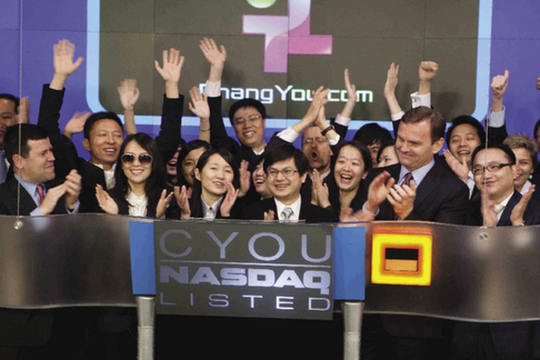|
Solving Financing Problems
There is no lack of incentive for Chinese hi-tech enterprises to follow in the footsteps of IT icons Microsoft, Yahoo and Intel, who grew into global leaders after being listed on the Nasdaq, as did Chinese giants Sina, Sohu and Baidu.
"To most small and medium-sized enterprises, the GEM is rain at the end of a dry season," notes Liu Ji, a professor at the Central University of Finance and Economics, referring to the fact quite a few SMEs are on the verge of bankruptcy due to the global financial crisis. Under the current economic crisis, the timing is bad for SMEs trying to get funding from financial institutions, and what's more, she adds, emerging SMEs in China have a huge demand for capital. "Although they may have great potential, they haven't shown outstanding achievement yet. Listing on the stock market creates opportunities to raise capital, but at the same time, exposes them to a competitive and selective process where only the fittest survive." Nevertheless, supporting growth and innovation by listing on the stock market, a global trend that started in the 1970s, is an essential option.
Liu also points out that the launch of the GEM helps establish and perfect the financial support system for small and medium-sized enterprises. Meanwhile, non-government investment stimulated by the GEM will play an important role in expanding domestic demand and maintaining economic growth.
 |
|
Changyou.com under Sohu was listed on the Nasdaq in April 2009. Sohu.com has become the first Chinese enterprise to own two listed companies in the United States. |
Not Flinching Before "High Threshold"
Some experts in venture capital point out that the threshold of the GEM in China is still high. Liu Jipeng, professor at the Law and Economics Center under China University of Political Science and Law, explains: "The GEM move aims to support SMEs that have great potential and especially those that hold independent intellectual property rights. Setting strict requirements for GEM applicants in the initial period sets the tone for standards that will guide the long-term development of the stock market and provide protection for investors and shareholders."
Liu Jipeng warns vast numbers of small investors that the GEM investment is risky. He elaborates, "First, the listed companies are varied in quality due to the lower threshold. Second, speculation in the name of 'high growth' is hard to defend with any conviction. And third, the possibility of risk investment funds and senior executives cashing out will result in fluctuating stock prices. A relatively high threshold for a GEM listing can therefore better protect the interests of investors.
Nevertheless, the so-called "high threshold" does not hold back enterprises seeking a listing. Statistics compiled for www.ssme.gov.cn show that nearly 600 SMEs in Shanghai are willing to be listed to date. According to an official from the Shenzhen Bureau of Trade and Industry, the new move is recognized as an important financing channel for SMEs in that city. About 1,100 of its enterprises essentially meet the GEM's qualifications, and many are already making an all-out sprint to the stock market.
As for the issue of back-up reserves, Cao Fengqi, director of the Research Center for Finance and Securities at Peking University, points out there appears to be no lack of enterprises seeking a listing. Whether the present capital market can satisfy the demand remains to be seen. However, according to Yao Gang, vice-chairman of CSRC, there is still a lot of work to do before the first set of companies appears on the market. The first crop of SMEs will not be listed on the GEM until August of this year. It takes three months to audit a candidate for the main board market normally, and a GEM hopeful may need an even more exacting audit before it goes public, as, by definition, an SME is a higher risk enterprise.
|
